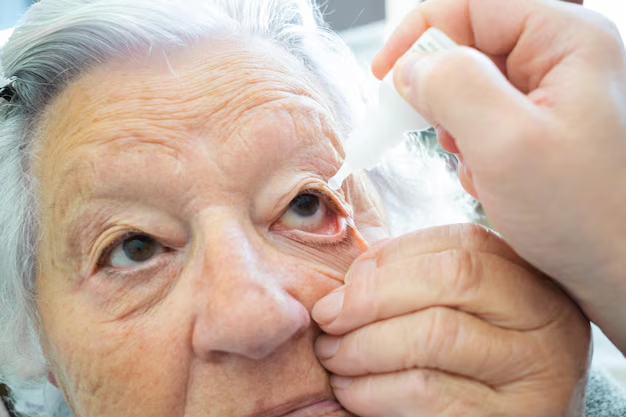Understanding Eye Cataracts: A Comprehensive Guide
Imagine looking through a frosty window and trying to capture all the vivid colors of the world outside. This is somewhat akin to how someone with a cataract experiences the world. Cataracts are a prevalent condition affecting millions globally, often leading to blurry vision and light sensitivity. This guide will delve into what cataracts are, the causes, symptoms, treatment options, and preventative measures you might consider.
What Exactly Are Cataracts?
Cataracts are cloudy formations that develop in the lens of the eye, impacting vision. The lens, positioned behind the iris and pupil, plays a crucial role in focusing light onto the retina. When a cataract forms, it obstructs this process, leading to poor vision quality. Most commonly associated with aging, nearly everyone will encounter cataracts if they live long enough.
Types of Cataracts
- Nuclear Cataracts: Typically linked with aging, these occur in the center of the lens, slowly causing the lens to harden and become yellow.
- Cortical Cataracts: Beginning at the lens's outer edges, these cataracts appear as white, wedge-like opacities.
- Posterior Subcapsular Cataracts: Forming at the back of the lens, they often lead to rapid changes in vision.
- Congenital Cataracts: These can occur at birth or develop during childhood.
Causes and Risk Factors
Understanding the origins of cataracts can help in early detection and management. Here are a few known causes:
- Aging: The most common cause is the natural aging process.
- Diabetes: Elevated blood sugar can influence cataract development.
- UV Radiation: Prolonged sun exposure without eye protection can increase risk.
- Smoking: There's a notable link between smoking and an increased rate of cataract development.
- Obesity: This is associated with various health issues, including cataracts.
- Genetics: A family history may increase risk.
Symptoms You Shouldn't Ignore
Cataracts typically develop slowly, but certain symptoms can signal their presence:
- Blurry or cloudy vision
- Difficulty seeing at night
- Sensitivity to light (glare)
- Seeing "halos" around lights
- Frequent changes in eyeglass prescription
- Fading or yellowing of colors
- Double vision in a single eye
Diagnosis
When symptoms arise, it's crucial to consult with an eye care professional. They may perform the following tests:
- Visual Acuity Test: Evaluates vision clarity using a chart.
- Slit-Lamp Examination: Enhances the magnification of the eye's structures.
- Retinal Exam: Determines the presence and extent of cataracts.
Treatment Options
While cataracts are primarily age-related, understanding treatment options is vital:
Non-Surgical Interventions
- Vision Aids: Stronger lighting and eyeglasses may support short-term vision improvements.
- Lifestyle Modifications: Managing diabetes, quitting smoking, and wearing UV protection can inhibit progression.
Surgical Treatments
When vision loss starts hampering daily activities, surgery typically becomes necessary. Here are common procedures:
- Phacoemulsification: A highly effective surgery, involving the use of ultrasound waves to break the cataract, followed by lens removal.
- Extracapsular Cataract Extraction: Involves removing the cloudy lens and replacing it with an artificial one.
Surgery is generally very safe, with high success rates in restoring vision. However, informed decisions should be made in consultation with a healthcare professional.
Prevention and Long-Term Care
While it's not always possible to prevent cataracts, certain measures might reduce risks:
- Regular Eye Exams: Especially crucial after the age of 60 for early detection.
- Healthy Lifestyle: A balanced diet rich in fruits and vegetables can support visual health.
- UV Protection: Wearing sunglasses that block out UV rays.
- Avoid Smoking: Helps in reducing the risk of cataracts and other health issues.
Key Takeaways and Tips
🔍 Summary of Practical Tips for Eye Health:
- 👩⚕️ Regular Check-Ups: Regularly schedule comprehensive eye exams.
- 😎 Use Sun Protection: Always wear sunglasses that block UV rays.
- 🥗 Balanced Diet: Incorporate leafy greens and fruits into your diet.
- 🚭 Quit Smoking: This will benefit not only your eyes but your general health.
Navigating Life with Cataracts
Understanding the ins and outs of cataracts empowers you to take appropriate action if symptoms arise. Imagine the vibrancy and clarity you'll maintain by being proactive about cataract prevention and intervention. Whether it's through regular check-ups, making lifestyle changes, or considering surgery when necessary, there are multiple pathways to ensure your vision remains as clear as possible for as long as possible.
When it comes to eye health, an informed approach can make all the difference, ensuring that you see the world with the clarity it deserves.
